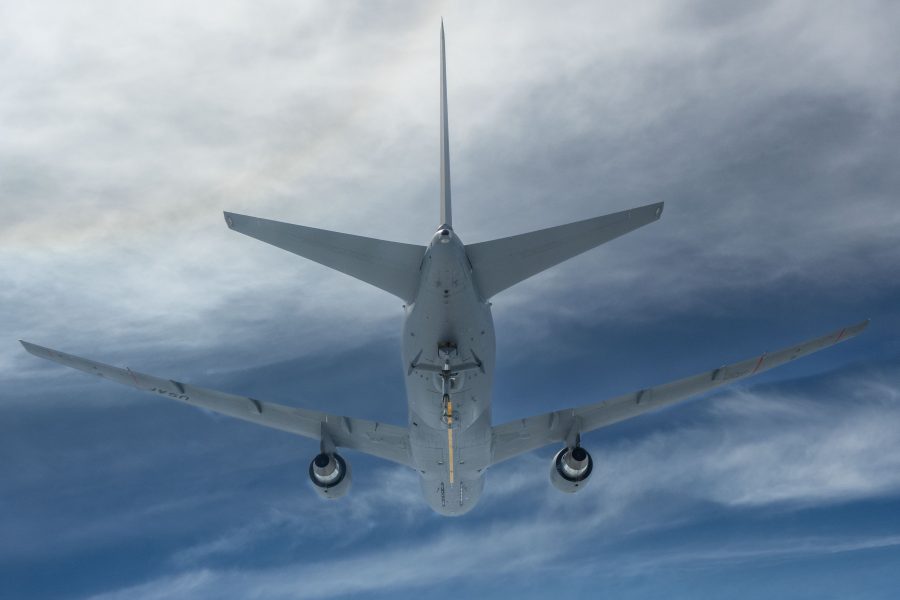A U.S. Air Force KC-46 tanker suffered damage to its boom while refueling F-22 Raptors off the coast of Virginia on July 8, Air & Space Forces Magazine has confirmed, with reported radio communication from the crew indicating the boom “detached.”
The aircraft, a Boeing KC-46 Pegasus from McConnell Air Force Base, Kan., declared an in-flight emergency and eventually diverted to Seymour Johnson Air Force Base, N.C., a spokesperson for the 22nd Refueling Wing confirmed.
According to air traffic control audio, obtained and published by The War Zone, the crew radioed that “our boom has detached from the aircraft” and that they were running emergency checklists.
Public records and flight tracking data show that the aircraft involved in the incident is a six-year-old KC-46, serial number 17-46033, flying under the callsign FELL81.
The plane began its flight in Kansas and, after the incident, descended below 10,000 feet, and circled the airspace around Joint Base Langley-Eustis, Va., before flying to Seymour Johnson, according to flight tracking data and Air Force officials.
“A KC-46A Pegasus from McConnell Air Force Base declared an in-flight emergency July 8, while operating off the coast of the eastern United States, refueling F-22s,” John Van Winkle, a spokesperson for the 22nd Air Refueling Wing, confirmed. “The crew had to make the decision to land at Seymour Johnson Air Force Base, N.C., and has landed safely there. The aircraft will remain there for the time being.”
Van Winkle said Air Force officials were still working to verify details surrounding the mishap and the extent of the damage to the aircraft.
“There was damage to the KC-46’s boom today,” Van Winkle added. “We’re letting the Safety Investigation work to determine the nature and causes of the in-flight emergency, and that will be a complete and methodical process looking at every conceivable aspect of the mission.”
The 1st Fighter Wing said the incident occurred while an F-22 was refueling from the KC-46.
“The F-22 Raptor returned and landed safely at Langley Air Force Base,” the wing said in a release.
A spokesperson for 1st Fighter Wing later later told Air & Space Forces Magazine it was also investigating the incident.
“Officials will determine the presence of any potential damage and assess its severity via thorough inspection,” they said.
An image provided to Air & Space Forces Magazine by a local aircraft photographer, X user enc_spotter, shows the tanker at Seymour Johnson with part of its boom missing.

The aircraft had flown two missions on July 7 without any reported difficulties, according to flight tracking data.
The KC-46, based on the commercial 767 airframe, has been plagued by issues since its introduction into the fleet, particularly with its refueling system. Boeing resumed deliveries of the aircraft in May after the Air Force halted acceptance of new planes for months due to cracks in the wings—an issue which Boeing and the Air Force say is now fixed.
A long-standing problem has been a so-called “stiff boom,” which prevents the aircraft from refueling the A-10 Thunderbolt II. Contractors and the Air Force are working on a redesigned actuator as a fix.
Another issue involves the aircraft’s Remote Vision System 2.0, an overhaul of the camera system boom operators use to guide the boom to receiving aircraft, which has been delayed until summer 2027. In its 2024 annual report, the Pentagon’s Office of the Director of Operational Test and Evaluation said the “KC-46A is not meeting many of its suitability metrics.”
This article was updated July 9 with comments from a spokesperson for the 1st Fighter Wing.


